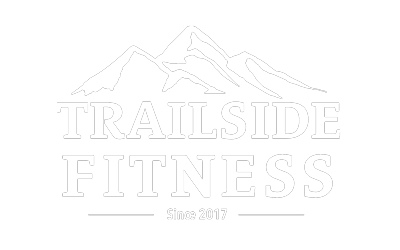Back pain affected 21% of hikers that abandoned their hike on the Appalachian Trail in 2017 according to a survey by The Trek. Since your back is a pretty big piece of real estate, we will cover both low back here and the mid-back later in this “deep dive” series.
Looking back at the last few articles, we can see how having a foot problem will affect the knees and hips. I have news for you, your spine attaches directly to your hips; any problem with the hips will usually result with low back pain or mid-back pain.
Anatomy

Going back to our mobility and stability chart, we can see that the low back is meant to be stable and the mid-back more mobile.
With a loss of motion in the hips, the body must try to find more motion elsewhere, either the knees or the low back.
If the low back now becomes more mobile due to loss of motion in the hips, the body will restrict motion in the mid-back to keep the spine stable.
While there may be several causes for back pain, be mindful of the feet first approach as a place to start.
Imbalances
As we mentioned in the hip article, hamstrings, glutes and hip flexors may play into low back pain. Realize that strength and getting the right muscle to fire at the right time is usually the answer to restore imbalances. Doing one or both of those things tend to eliminate a large percentage of muscle and joint pains.
I also introduced the idea of the hips as a bowl of water. If they are rolled forward, you spill water out the front; too far back and you spill water out the backside. You want to be in the middle, this will help maintain your natural spinal curve.

We have talked about imbalances before, but let’s more clearly define what that means. If one muscle is short and tight while another is long and stretched, they lose the ability to work properly as a team. There is always one muscle that opposes another muscle, like the biceps and triceps, quads and hamstrings, and iliopsoas and glutes.
If this imbalance is in place, joints are not able to stay in their central position, where they operate the best.
What About The Muscles
Muscles use overlapping fibers to contract and if they are too stretched to grab on, a weak contraction (or shortening) phase will, or maybe none at all. Â When the muscle is short, there is nothing left to contract; instead, it has trouble lengthening back out.
Muscles are very adaptable but prefer to adopt whatever position they are in most often. It’s all efficiency on the part of the body.
 Short muscles also tend to steal the electrical signal sent to other nearby muscles to engage. For example, if the Iliopsoas is tight, it will steal some of the signal for the glutes to engage, and as a result, the glutes become weaker.
Short muscles also tend to steal the electrical signal sent to other nearby muscles to engage. For example, if the Iliopsoas is tight, it will steal some of the signal for the glutes to engage, and as a result, the glutes become weaker.
Less signal = less muscle contraction which leads to muscular atrophy.
This happens all over the body. It’s so subtle that you won’t have any idea it’s happening until something starts to hurt.
You’re probably going to want your glutes for hiking, so addressing tight hip flexors is key!
Download the free article on ways that you can improve your odds of being successful during your through hike!
The Low Back Fixes
If you are having back pain that gets worse with any of these movements, stop. If you feel tingling across your waistline, down either or both legs, stop. These are signs that you need to have looked at by a medical doctor.
My approach with low back pain is to focus on strength to correct imbalances. Â While you may require specific exercises to target the nervous system, the examples given will be more general strength exercises. I like to target the glutes, which tend to be the main culprit, as well as the core.
We have covered exercises and stretches for the core and glutes in previous posts, as well as this deep dive series. Here are a few of my favorites:
We used the couch stretch previously, but it bears repeating here, such a beneficial stretch to take care of your hip flexors! Spend 2 minutes per leg, switch legs, and then repeat the cycle.
The Couch Stretch
I think one of the best pure glute exercises is the hip thrust by Bret Contreras. He is world renown for his training research on glutes and he teaches you this key exercise. Add this one into your routine!
Hip Thrust
If I had to choose just one exercise to train for a thru-hike, it would easily be lunges. They strengthen the connective tissue, hit all of the main muscles and stabilizers for the lower body and hit your core and feet as well. Fitness Blender has a lot of great video for exercises and workouts. I have used them in the past and I really like and trust their information.
Lunges
Finally, I recommend the Angry Cat and Happy Cat stretch. This is great for all around spine health. The fella in the video has a nice accent, so consider that a bonus!
Angry Cat, Happy Cat
I hope these help! With any exercise or stretch program consistency is the key to create change. These exercises and stretches can easily be rotated into your current program.
Be sure to like our Facebook page and follow us on Instagram and Twitter!
You can reach me info@trailsidefitness.com with any injury issues, past or present that you feel will impact your hike. Training questions are also welcome – I am happy to help!

Recent Comments